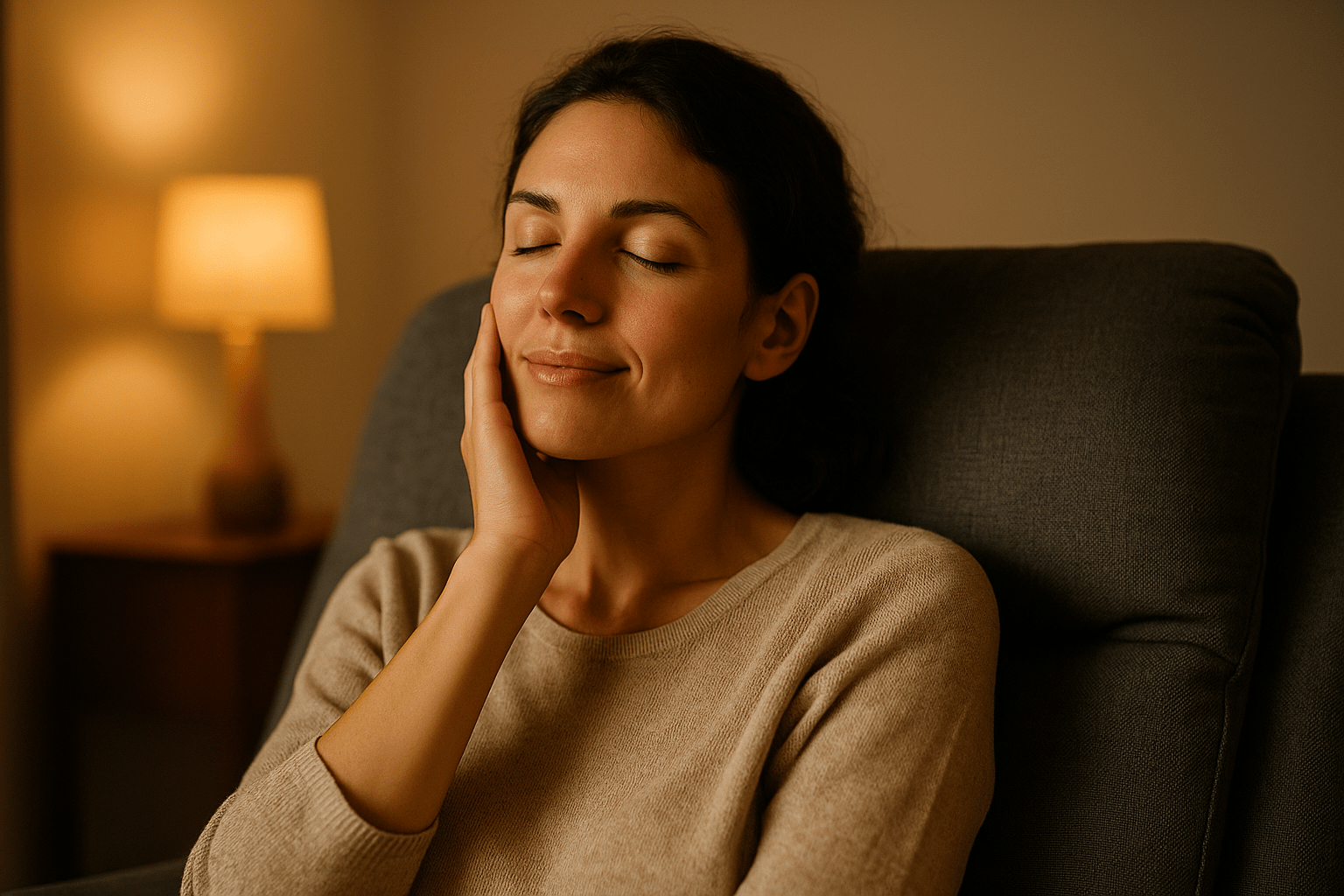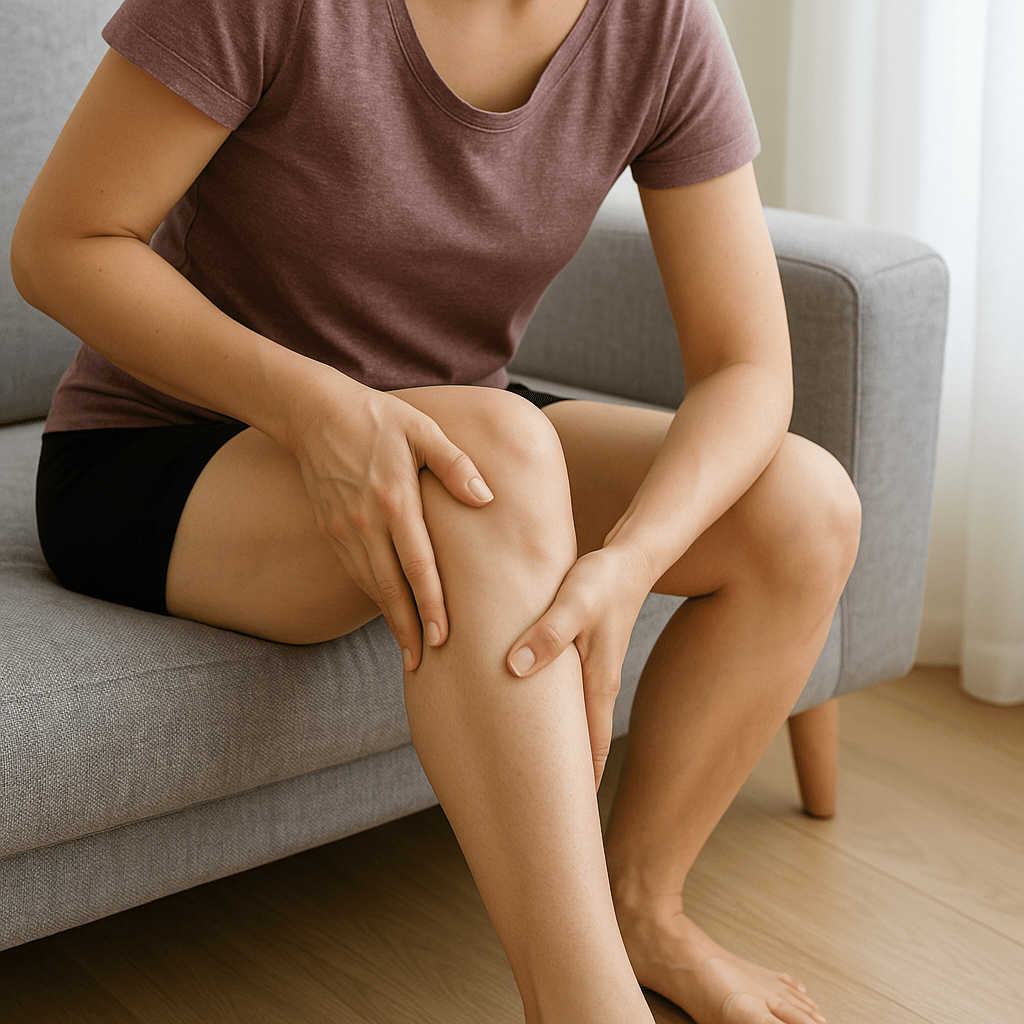Migratory joint pain: more than just a pain in transit
One morning you feel a sharp pain in your knee, which leads you to the doctor. After a thorough examination, some tests and a short course of treatment, you return home relieved, only to discover a few days later that the pain has moved - now it's in your shoulder. Another visit to the doctor, a new diagnosis, but the pain doesn't stick: it next makes itself comfortable in your wrist. This ironic "migration" from one joint to the next sends you on an odyssey of your very own - from doctor to doctor in search of answers and relief. A possible diagnosis? Wandering...


One morning you feel a sharp pain in your knee, which leads you to the doctor. After a thorough examination, some tests and a short course of treatment, you return home relieved, only to discover a few days later that the pain has moved - now it's in your shoulder. Another visit to the doctor, a new diagnosis, but the pain doesn't stick: it next makes itself comfortable in your wrist.
This ironic "hike" from one joint to the next sends you on your very own odyssey - from doctor to doctor, in search of answers and relief. A possible diagnosis? Wandering joint pain, an apt name for a condition that drives you around with no end in sight.
In fact, a survey by the RKI on joint painshows that around 25 percent of respondents stated that they had experienced joint pain in the past 24 hours. This makes it one of the most common reasons for restricted mobility.
In this article, we take a closer look at migratory joint pain, also known as migratory arthritis. We explain what's behind this phenomenon, which plagues us here and there, and why migratory joint pain is more than just a short-term ache passing through.
How can those affected deal with this and how can massages help? We address these and other questions in this article.
Reading tip: From head to toe: Massages help here
What is migratory joint pain?
Migratory joint pain, often referred to medically as migratory arthritis, describes a phenomenon in which pain can move from one joint to another. This type of joint pain is not static; rather, it travels through different parts of the body, which can complicate both diagnosis and treatment.
A key feature of migratory joint pain is that the affected joint may be temporarily inflamed (arthritis), but symptoms may spread or shift to other joints. Sufferers may experience a range of symptoms, including swelling, redness, increased warmth in the affected areas and limited mobility, which move from joint to joint along with the pain.
Reading tip: How to relieve osteoarthritis pain
Can joint pain actually migrate?
Yes, joint pain really can migrate. This phenomenon is often observed in certain systemic diseases such as rheumatic fever or Lyme arthritis. This process is based on a complex interaction in the immune system that can be triggered by autoimmune or infectious triggers.
Specifically, this is because in diseases such as rheumatic fever and Lyme disease, which are caused by bacteria, the body's immune system produces antibodies. These not only attack the pathogens, but also the tissue in the joints. As these antibodies can move around in the bloodstream, this means that inflammation can "migrate" from one joint to the next.
Now that we understand how this joint pain can develop and manifest itself, let's look at the causes, i.e. possible specific diseases that can lead to these symptoms.
Reading tip: Pain management - What is the best way to deal with pain?
Causes and underlying diseases
Migratory joint pain can be triggered by a variety of causes, ranging from infectious to autoimmune processes. This pain is distressing not only because of its intensity, but also because of its unpredictability and ability to "migrate" between different joints.
General causes of migratory joint pain:
The common causes of migratory joint pain include a wide range of conditions that affect both the immune system and the body's defense against infection. They are often the result of:
- InfectionsCertain viruses, such as the Epstein-Barr virus or parvovirus B19, can trigger an inflammatory reaction in various joints. The hepatitis C virus is also known to cause joint symptoms.
- Autoimmune diseasesThis is where the immune system mistakenly attacks healthy body tissue, which can lead to inflammation in various joints.
- Metabolic disordersDiseases such as gout, which is characterized by the deposition of uric acid crystals in the joints, can also cause migratory joint pain.
Specific diseases related to migratory joint pain:
- Reactive arthritisThis occurs after an infection has taken place in the body, typically in the urogenital or gastrointestinal tract. Arthritis can occur weeks after the actual infection and can spread to various joints.
- Rheumatic feverThis serious illness often follows a streptococcal infection and can cause severe inflammation in various joints, the heart and other organs.
- Lyme arthritis: Caused by the bacterium Borrelia burgdorferi, which is transmitted by tick bites. Lyme arthritis can cause episodic pain in one or more joints, which may alternate between joints.
- Whipple's disease: A rare bacterial infection that affects the intestines but can also cause joint pain and other systemic symptoms.
- Other relevant diseases: Systemic lupus, erythematosus (SLE) and sarcoidosis. They can also exhibit migratory joint pain as symptoms.
The fact that those affected often search for relief over a long period of time and in consultation with many doctors is often due to the fact that the diagnosis of migratory joint pain can be very challenging due to the large number of potential causes.
Reading tip: Prevent thrombosis with massages
Joint pain all over the body - how can a diagnosis be made?

The diagnosis usually begins with a detailed medical history and a physical examination. Imaging procedures such as X-ray or MRI help to assess the condition of the joints and blood tests to identify inflammatory markers or specific antibodies. These can subsequently indicate whether the cause is autoimmune or infectious.
Reading tip: Muscle pain all over the body - what to do?
Various forms of migratory joint pain
When making a diagnosis, it helps to analyze the existing pattern of symptoms as precisely as possible. In particular, as migratory joint pain can occur in various forms, in some cases this already allows conclusions to be drawn about the cause.
For example, some patients experience pain that alternates between widely separated joints such as the shoulders and knees, while in others the pain is more localized and moves between adjacent joints such as the fingers. These patterns can provide clues to the underlying cause and help to make the correct diagnosis.
Joint pain during the menopause
In women in particular, hormonal changes during the menopause can lead to an increased susceptibility to joint pain. The drop in oestrogen levels can contribute to joints being less supple and showing inflammatory reactions more quickly, which in some cases leads to migratory joint pain. Due to the complexity and variety of causes, a clarifying discussion with your doctor is recommended.
Reading tip: Joint pain after corona is not uncommon - find out more in the article.
When should you see a doctor?
As a general rule, you should seek medical advice, especially if you experience persistent or recurring joint pain and primarily if the pain occurs for no apparent reason.
If they then move from one joint to another, clarification is definitely required in order to be able to plan further steps. If fever, unexplained weight loss, severe redness or swelling of the joints occur at the same time, these are also alarming symptoms that require immediate medical evaluation.
How is migratory joint pain treated?
The following applies: the cause of the pain determines the form of treatment. This usually includes anti-inflammatory medication, physiotherapy and, if necessary, specific therapies aimed at the underlying disease.
In some cases, complementary approaches such as acupuncture or special diets can also help to alleviate symptoms. Massages can also be a suitable means of relieving joint pain. To avoid contraindications, i.e. effects that are contrary to the desired relief, please discuss any treatment with your doctor.
Reading tip: Massages during pregnancy
Can massages help with migratory joint pain?
The answer is that massages can be helpful as part of a holistic treatment approach. While they do not provide a cure for the underlying condition, they can help to alleviate symptoms and improve your quality of life.
Massages mainly work by promoting blood circulation and relaxing your muscles around your affected joints. Furthermore, improved blood circulation can help to remove inflammatory toxins and metabolic waste from the affected areas more quickly. Relaxing the muscles reduces the strain on the joints and alleviates pain and stiffness.
Special massage techniques such as Swedish massage or gentle lymphatic drainage are particularly beneficial here to reduce swelling and promote mobility.
Deep tissue massages, on the other hand, should be used with caution as they can be counterproductive for inflamed joints. Therapists who are familiar with joint diseases can customize the massage to your specific needs. Massage is a simple and supportive therapy that should always be used in combination with other treatments recommended by a doctor.
Reading tip: How manual lymphatic drainage can improve your well-being
Let your joint pain drift away
When pain moves unpredictably from one joint to the next, it often leads to a seemingly endless search for relief. The first essential step is therefore a correct diagnosis. If this is "migrating joint pain", we have seen that this can be caused by numerous factors such as infections and autoimmune diseases.
This makes early and accurate diagnosis and appropriate treatment all the more important. Massages can also help you to alleviate your pain and are often part of a proactive lifestyle that ensures that the wandering of your joint pain, but also that of examination after examination, comes to an end.
Cover picture: Sasun Bughdaryan, other pictures: Tao Yuan

Co-founder and Managing Director of Massage Chair World. With his expert knowledge and industry expertise, he helps private individuals and companies to find the right massage chairs for relaxation, health and vitality. The individual expert advice is provided both by telephone or video chat, as well as in the exhibition outside Stuttgart.




